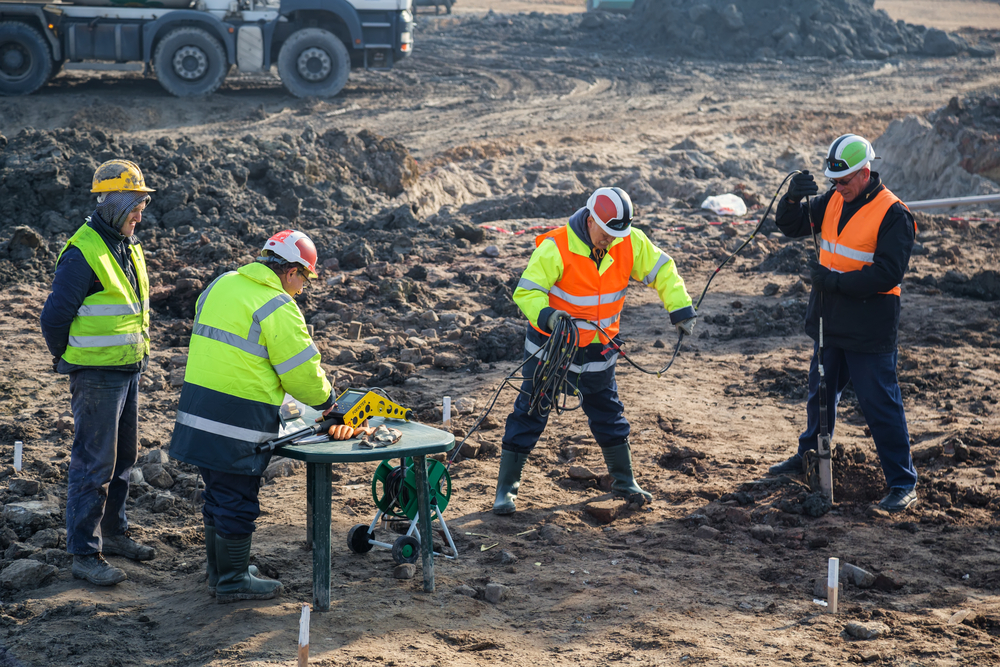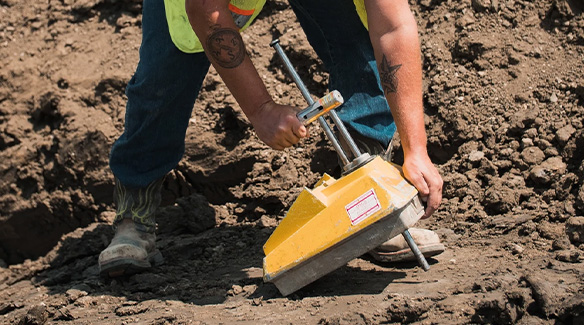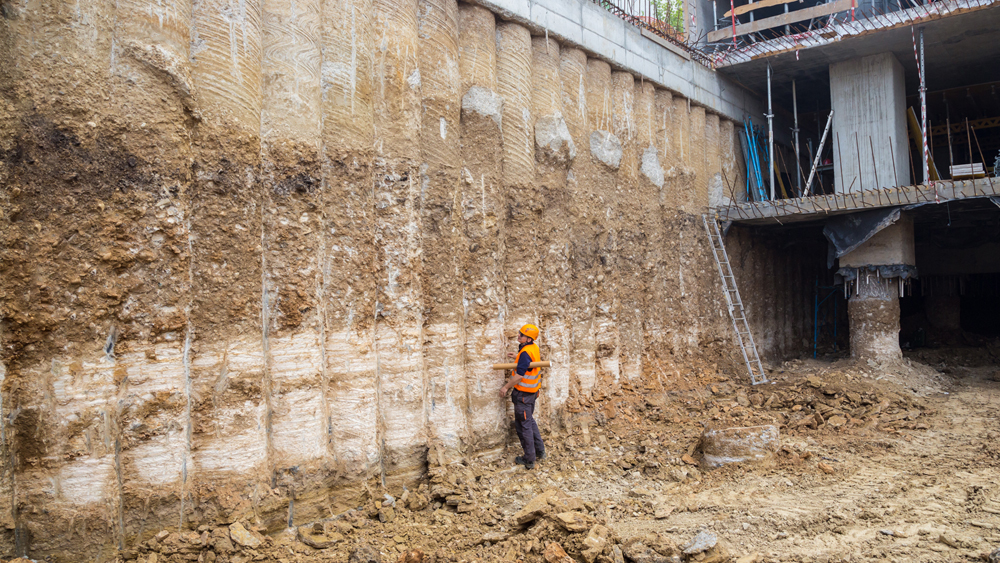Just How Consulting Civil Engineering Firms Contribute to Effective Job Monitoring and Design Application
Consulting civil design companies are integral to the success of construction projects, merging technological effectiveness with strategic oversight. Their role includes not just the execution of usefulness researches but also the application of sophisticated task management methods that simplify procedures and improve stakeholder involvement. By concentrating on layout optimization and threat reduction, these firms guarantee that tasks are not just practical yet additionally lasting and cost-effective. Nevertheless, the subtleties of their contributions usually stay underexplored, prompting a closer examination of the details methods and methods that underpin their effectiveness - geotechnical engineering companies in south africa.
Duty of Civil Designers
Comprehending the role of civil designers is important for the successful administration of building jobs. Civil engineers function as the backbone of facilities development, making certain that projects are created and performed to satisfy safety, sustainability, and performance standards. Their competence encompasses different facets of engineering, consisting of architectural, environmental, and geotechnical specialties.
Civil engineers are in charge of performing usefulness researches, which examine the stability of proposed tasks by examining economic, technical, and ecological elements. They create in-depth blueprints and requirements, integrating ingenious remedies to maximize materials and sources. Throughout the building and construction phase, civil designers manage the task, collaborating with architects, specialists, and stakeholders to make sure adherence to make specs and governing requirements.

Project Preparation Approaches
Effective job preparation methods are crucial for guaranteeing that building and construction projects are carried out smoothly and efficiently. Consulting civil design companies play a critical role in this process by using detailed preparation techniques that deal with different project phases. Originally, a comprehensive assessment of project extent and customer demands is carried out, enabling for the identification of essential landmarks and deliverables.
In addition, these companies utilize tools such as Gantt graphes and job management software to develop thorough timelines, making it possible for efficient scheduling of tasks and source allowance. This structured method helps to prepare for prospective traffic jams and designate needed sources proactively. Danger monitoring is an additional key component; firms conduct threat evaluations to identify possible problems that can emerge during the project's lifecycle, executing reduction techniques to reduce interruptions.
In addition, stakeholder interaction is emphasized throughout the preparation phase. Routine communication with customers, professionals, and local authorities ensures that all events are aligned with project goals and timelines. By incorporating these methods, speaking with civil design firms improve the chance of task success, making sure adherence to budget restraints and regulative requirements while fostering a collaborative setting.
Design Optimization Techniques
Design optimization strategies are vital for enhancing the effectiveness and sustainability of civil design projects. Discover More Here These techniques involve the organized analysis of design specifications to attain the most effective feasible results while minimizing expenses and source use. By making use of advanced computational devices and algorithms, engineers can evaluate various design options and choose one of the most efficient choices based on particular task requirements.
One commonly utilized method is parametric design, which allows for the adjustment of layout variables to observe their effect on general project performance. This iterative process causes ingenious options that not just fulfill useful needs yet additionally comply with environmental criteria. Additionally, techniques such as value engineering concentrate on maximizing project components to take full advantage of value while decreasing unnecessary expenses.
Additionally, the assimilation of Building Information Modeling (BIM) promotes much better partnership among stakeholders, making it possible for real-time modifications and enhancements to layouts. This alternative view promotes an extensive understanding of the task, causing informed decision-making. Inevitably, efficient design optimization strategies result in boosted job timelines, minimized waste, and improved structural performance, contributing to the overall success of civil engineering undertakings.
Danger Monitoring Techniques
Danger administration techniques are critical in making certain the successful delivery of civil engineering projects, as they help recognize, assess, and minimize prospective dangers that could affect project end results. Efficient risk administration is a methodical process that entails the recognition of threats, analysis of their probability and influence, and the growth of approaches to address them.
Consulting civil engineering firms commonly employ a combination of qualitative and quantitative threat evaluation techniques (geotechnical engineering companies in south africa). Qualitative approaches, such as conceptualizing sessions and skilled meetings, assistance collect insights on potential dangers from various stakeholders. On the other hand, measurable techniques involve statistical evaluation and modeling to figure out the likelihood and potential impact of determined threats
Once threats are evaluated, firms implement reduction methods, which might include danger evasion, acceptance, transfer, or decrease. This can include revamping job components to remove dangers or protecting insurance to counter potential financial losses. Constant tracking and testimonial of dangers throughout the project lifecycle are also vital, allowing for timely modifications to run the risk of administration techniques as new risks arise.
Collaborative Communication Practices
Enhancing job outcomes with collective communication practices is vital for speaking with civil design companies. Effective interaction fosters a culture of openness and depend on among stakeholders, which is crucial for the successful execution of design jobs. By carrying out structured interaction networks, companies can make certain that all parties-- customers, specialists, and staff member-- are straightened on task deliverables, timelines, and objectives.
Routine conferences, both informal and official, promote the exchange of ideas and comments, permitting for real-time problem-solving and decision-making. Using joint devices such as task administration software encourages documents and monitoring of progression, while enabling instant access to vital info.
Moreover, active listening and open dialogue are vital components in a collective setting. By valuing varied point of views, companies can introduce and adjust layouts that meet both technological requirements and client expectations. Furthermore, promoting a team-oriented atmosphere reduces misunderstandings and boosts the total high quality of work.

Final Thought
In verdict, getting in touch with civil engineering firms are More about the author integral to successful project management and style execution. By employing strategic planning, layout optimization, and efficient danger management, these firms improve task efficiency and sustainability. Their commitment to joint interaction additionally guarantees stakeholder alignment and cultivates a cooperative review setting. Ultimately, the experience and methods made use of by seeking advice from civil designers substantially contribute to accomplishing project goals while making best use of and minimizing costs source application.

In verdict, consulting civil design firms are integral to effective task monitoring and style implementation.